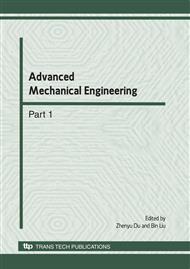p.352
p.356
p.360
p.365
p.370
p.376
p.382
p.387
p.391
Three Dimensional Finite Element Analysis of Composite Laminates with Non-Penetrating Damage Repaired by Scarf Bonding Method
Abstract:
The three dimensional finite element model of composite laminates made of carbon fiber reinforced bismaleimide resin is built, and the stress state of the composite laminates under unidirectional tensile force is analyzed. The strength criterion and damage mode are given based on the stresses of material principal direction. The three dimensional finite element model of the same laminates with non-penetrating damage repaired by scarf bonding method is built, and the stress state is also analyzed. The strength criterion and the damage mode of the scarf bonding composite laminates are also given. The strength and the damage mode of original laminates are compared with that of the laminates with non-penetrating damage. The influence of the interlaminar stress is considered in these analysis models. It is showed that the three dimensional models can simulate the geometric and physical features of the real composite laminates. It is concluded that the original composite laminates made of carbon fiber reinforced bismaleimide resin and the repaired one both damage first in the laminar whose second material principal direction coincides with the axial tensile force. And the damage mode is resin crack under tensile stress. The strength of the bonding patches is higher than the laminates repaired by scarf bonding. After scarf bonding repair, the strength of the damaged laminates can recover up to about eighty-four percent.
Info:
Periodical:
Pages:
370-375
Citation:
Online since:
June 2010
Authors:
Keywords:
Price:
Сopyright:
© 2010 Trans Tech Publications Ltd. All Rights Reserved
Share:
Citation:


